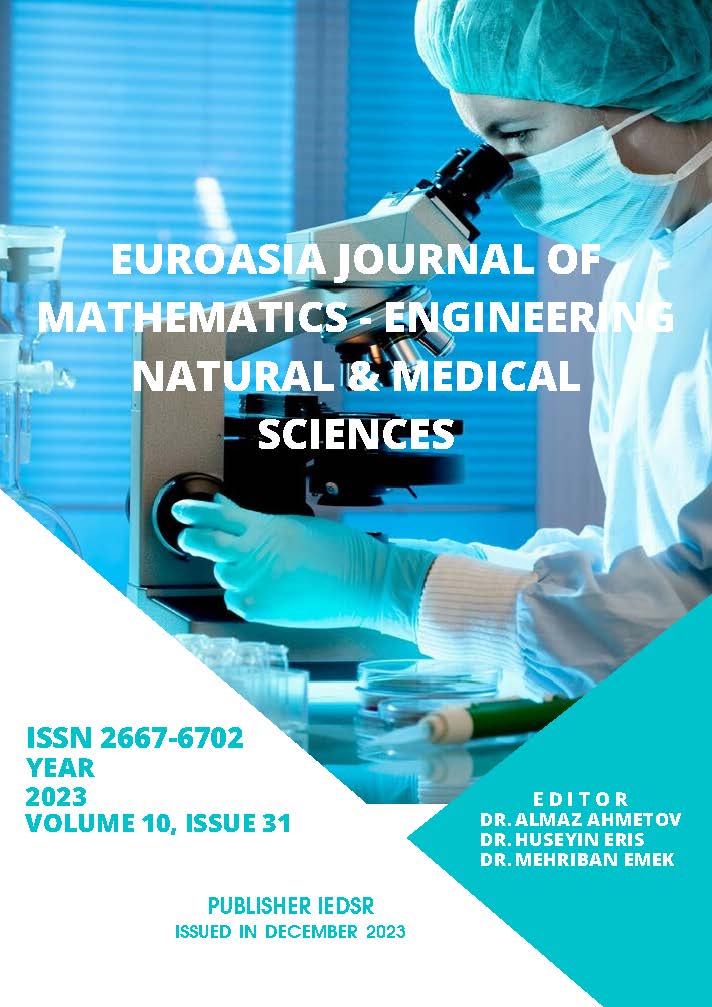The Effect of Diabetes Education on Self-Management Perception of Individuals with Diabetes
DOI:
https://doi.org/10.5281/zenodo.10445261Keywords:
Diabetes, education, self-managementAbstract
The aim of this study is to determine the effect of diabetes education on diabetes self-management perception in individuals with diabetes. The study was a quasi-experimental research and the sample consisted of 84 individuals with diabetes aged 18 years and over. Data were collected in the form of a face-to-face questionnaire in the diabetes outpatient clinic of a state hospital. Personal data identification form and Self-Management Perception in Diabetes Scale were used as data collection tools and SPSS 26.0 statistical programme was used to analyse the data. It was found that the mean age of the participants was 58.38±10.66, 63.1% did not have any chronic disease other than diabetes, 65.5% had not received diabetes education before, and the mean diabetes year was 7.38±3.68. The pre-test mean total score of the Perception of Self-Management in Diabetes Scale was 24.04±3.97 and the post-test score was 34.14±2.94, and a significant relationship was found between the pre-test and post-test total scores (p<0.05). A significant correlation was found between the pre-test and post-test total scores of the Self-Management Perception in Diabetes Scale of individuals with diabetes aged 58 years and over and under 58 years, those with diabetes less than 7 years and 7 years and over, men and women, those who received diabetes education before and those who did not receive diabetes education (p<0.05). This shows that the education given in all individuals was effective in increasing the diabetes self-management perception scores. In conclusion, in order to know and prevent acute and chronic complications of diabetes, individuals should have a high level of diabetes self-management and self-management perception. This is only possible with diabetes education. According to the study, it is concluded that these trainings should be repeated at certain intervals. It is recommended to determine the diabetes self-management perceptions of individuals with diabetes and to provide diabetes education at certain intervals.
References
American Diabetes Association. (2021). Classification and diagnosis of diabetes:Standards of medical care in diabetes 2021. Diabetes Care, 44(1), 15-33.
American Diabetes Association. (2022). Standards of Medical Care in Diabetes 2022, Diabetes Care, 45(1), 1–270.
Bayındır Çevik, A., Özcan, Ş. (2020). Psychometric Properties of the Perceived Diabetes Self-Management Scale in Turkish Patient with Type 2 Diabetes. Diyabet, Obesite, ve Hipertansiyonda Hemşirelik Forumu Dergisi, 12(2), 15-22.
Boothby, M. R., Salman, P. (2010). The Grounding of the Construct of Self-efficacy in Type 2 Diabetic Patients’ Own Thinking, Turkish Clinics Endocrinology, 5(2), 39-48
Canbolat, Ö., Ekenler, Ş., Polat, Ü. (2022). Diyabet Özyönetiminde Engeller ve Kolaylaştırıcılar. Med J SDU, 29(1), 143-148.
Erol, Ö. (2009). İnsülin kullanan diyabetlilerde hipoglisemi korkusu ve öz-etkililik. (Yüksek Lisans Tezi). İstanbul Üniversitesi Sağlık Bilimleri Enstitüsü, İstanbul.
International Diabetes Federation. (2019). Diabetes Atlas.9th.ed. https://diabetesatlas.org/upload/resources/material/20200302_133351_IDFATLAS9e-final-web.pdf. Erişim tarihi: 01.11.2023
International Diabetes Federation: IDF Diabetes Atlas, Brüssels, Belgium 2021, 10. Baskı, IDF Diyabet Atlası 2021, IDF Diyabet Atlası (https://diabetesatlas.org/atlas/tenth-edition/) Erişim tarihi: 01.11.2023
İstek, N., Karakurt, P. (2018). Global bir sağlık sorunu: Tip 2 diyabet ve öz-bakım yönetimi. JAREN, 4(3), 179-182.
Kara, M., Van der Bijl, J. J., Shortridge-Baggett, L. M., Asti, T., Erguney, S. (2006). Cross-cultural adaptation of the Diabetes Management Self-Efficacy Scale for patients with type 2 diabetes mellitus: scale development. Int J Nurs Stud, 43(5), 611-21.
Löfman, S., Hakko, H., Mainio, A., Timonen, M., Räsänen, P. (2012). Characteristics of suicide among diabetes patients: a population based study of suicide victims in Northern Finland. J Psychosom Res, 73, 268–71.
Özgül, E., Yanık, Y. T. (2016). Tip 2 diyabetli bireylerin öz-yeterlilik düzeylerinin değerlendirilmesi, Anadolu Hemşirelik ve Sağlık Bilimleri Dergisi, 19(3), 166-174.
Powers, M. A., Bardsley, J., Cypress, M., Duker, P., Funnell, M. M., Hess Fischl, A., ... Vivian, E. (2015). Diabetes self-management education and support in type 2 diabetes: a joint position statement of the American Diabetes Association, the American Association of Diabetes Educators, and the Academy of Nutrition and Dietetics, Diabetes Care, 38(7), 1372-1382.
Rashidi, M., Özcan, H.Ş. (2022). Oral Antidiyabetik Kullanan Tip 2 Diyabetli Bireylere Verilen Kendi Kendini Yönetme Eğitiminin Diyabet Kontrolü ve Yaşam Kalitesi Üzerine Etkisi. Türk Diyabet Hemşireliği Dergisi, 2(2), 9-17.
Roy, T., Lloyd, C. E., Parvin, M., Mohiuddin, K. G. B., Rahman, M. (2012). Prevalence of co-morbid depression in out-patients with type 2 diabetes mellitus in Bangladesh. BMC Psychiatry, 12, 1-10.
Satman, I., Omer, B., Tutuncu, Y., Kalaca, S., Gedik, S., Dinccag, N., ve ark. (2013). (TURDEP-II Study Group). Twelve-year trends in the prevalence and risk factors of diabetes and prediabetes in Turkish adults. Eur J Epidemiol, 28(2), 169-80.
Wallston, K.A., Rothman, R. L., Cherrington, A. (2007). Psychometric Properties of The Perseived Diabetes Self-Management Scale (PDSMS). J Behav Medicine, 30, 395-401.
World Health Organization. (2016). Global Report on diabetes. https://www.who.int/publications/i/item/9789241565257. Erişim tarihi: 01.11.2023
Usta Yeşilbalkan, Ö. (2001). Tip 2 diyabetli hastaların kendi kendilerine bakımlarındaki özyeterlilik ve özyeterliliklerini etkileyen faktörlerin incelenmesi. (Yüksek Lisans Tezi). Ege Üniversitesi Sağlık Bilimleri Enstitüsü, İzmir.
Yüksel, M., Bektaş, H. (2021). Tip 2 Diyabet Öz Yönetiminin Güçlendirilmesinde Mobil Sağlık Uygulamalarının Kullanımı: Literatür Derlemesi, Turkiye Klinikleri Hemsirelik Bilimleri, 13(2), 424-434.
Downloads
Published
How to Cite
Issue
Section
License
Copyright (c) 2023 Euroasia Journal of Mathematics, Engineering, Natural & Medical Sciences

This work is licensed under a Creative Commons Attribution-NonCommercial 4.0 International License.

